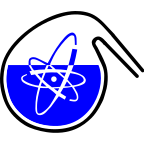Speaker
Description
The crucial agents in partitioning of high level liquid nuclear waste are organic ligands capable of selective complexation of the actinides and lanthanides. To evaluate their applicability, it is necessary to study the stability against undesirable reactions of these ligands, causing their structural changes. One of the main cause for degration is represented by reactions with highly concentrated free radicals.
In this work, we present the summary of theoretical studies for examining the stability of DGA-ligands (TODGA and its derivatives) and CyMe

